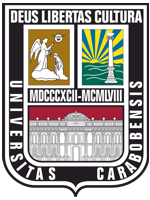Sinergia necesaria en las tecnologías educativas: diseño y aprendizaje
DOI:
https://doi.org/10.46502/issn.1856-7576/2025.19.01.1Palabras clave:
ingeniería, diseño, tecnologías educativas, laboratorio virtual, universidad, enseñanzaResumen
La utilización de entornos de aprendizaje de realidad virtual (EARV) presenta actualmente una tendencia al alza en la educación, con el propósito de mejorar el proceso y los resultados de aprendizaje de los estudiantes. En este artículo se aborda la forma de mejorar el diseño de un laboratorio virtual a partir de los resultados obtenidos en la investigación llevada a cabo durante diez años en asignaturas del área de Ciencia e Ingeniería de Materiales (CIM) en el Grado de Ingeniería Mecánica. En este estudio se compara un conjunto de EARV creados en años anteriores con otros recientemente desarrollados. Los resultados de la encuesta planteada a 199 alumnos de CIM arrojan luz sobre cómo mejorar el aprendizaje, la retención y la transferencia de los conocimientos de los estudiantes. Este documento considera la teoría cognitiva sobre el aprendizaje significativo (AS) como principio que guía y sustenta el diseño en los EARV para mejorar los resultados del aprendizaje. A través de la aplicación de los principios del AS, se ha comprobado que el diseño de un EARV debe seguir un sistema de protocolo paso-a-paso como forma de presentar los contenidos de una manera intencionalmente estructurada. Este estudio identifica los patrones de diseño de un EARV para que favorezca el AS. Los resultados muestran que los contenidos que son aprendidos significativamente son más estables y menos propensos al olvido.
Citas
Antón-Sancho, A., Fernández-Arias, P., & Vergara, D. (2023). Higher education in the Pacific Alliance: Descriptive and exploratory analysis of the didactic potential of virtual reality. Multimodal Technologies and Interaction, 7(3), 30. https://doi.org/10.3390/mti7030030
Antonietti, A., Rasi, C., Imperio, E., & Sacco, M. (2000). The representation of virtual reality in education. Education and Information Technologies, 5(4), 317-327. https://doi.org/10.1023/A:1012057608694
Ausubel, D. P. (1977). The facilitation of meaningful verbal learning in the classroom. Educational psychologist, 12(2), 162-178. http://doi.org/10.1080/00461527709529171
Ausubel, D. P. (2000). The acquisition and retention of knowledge: A cognitive view. Springer Science & Business Media. http://doi.org/10.1007/978-94-015-9454-7
Balamuralithara, B., & Woods, P. C. (2009). Virtual laboratories in engineering education: The simulation lab and remote lab. Computer Applications in Engineering Education, 17(1), 108-118. http://doi.org/10.1002/cae.20186
Barari, N., RezaeiZadeh, M., Khorasani, A., & Alami, F. (2020). Designing and validating educational standards for E-teaching in virtual learning environments (VLEs), based on revised Bloom’s taxonomy. Interactive Learning Environments, 30(9), 1640–1652. https://doi.org/10.1080/10494820.2020.1739078
Bell, J. T., & Fogler, H. S. (1997). Ten steps to developing virtual reality applications for engineering education. Proceedings of the American Society for Engineering Education Annual Conference. http://doi.org/10.18260/1-2--6831
Bricken, M. (1991). Virtual reality learning environments: potentials and challenges. Computer Graphics, 25(3), 178–184. http://doi.org/10.1145/126640.126657
Britain, S., & Liber, O. (1999). A framework for Pedagogical Evaluation of Virtual Learning Enviroments. (No. 41): JISC Technologies Application (JTAP) Programme. 1-46. University of Wales. Disponible en: https://bit.ly/3s8DreM [Último acceso: 26 enero 2023]
Chittaro, L., & Ranon, R. (2007). Web3D technologies in learning, education and training: Motivations, issues, opportunities. Computers & Education, 49(1), 3–18. https://doi.org/10.1016/j.compedu.2005.06.002
Del Moral Pérez, M. E., & Villalustre Martínez, L. (2005). Adaptación de los entornos virtuales a los estilos cognitivos de los estudiantes: un factor de calidad en la docencia virtual. Pixel-Bit. Revista de Medios y Educación, (26), 17-25. https://bit.ly/3cOTZDw
Dobrzański, L. A., & Honysz, R. (2007). Materials science virtual laboratory as an example of the computer aid in materials engineering. Journal of Achievements in Materials and Manufacturing Engineering, 24(2), 219-222.
Extremera, J., Vergara, D., Dávila, L., & Rubio, M. P. (2020). Virtual and augmented reality environments to learn the fundamentals of crystallography. Crystals, 10(6), 456. http://doi.org/10.3390/cryst10060456
Flores, C., Matlock, T., & Dávila, L. P. (2012). Enhancing materials research through innovative 3D environments and interactive manuals for data visualization and analysis. MRS Online Proceedings Library, 1472(1), 29-38. https://doi.org/10.1557/opl.2012.1257
Fraser, D. M., Pillay, R., Tjatindi, L., & Case, J. M. (2007). Enhancing the learning of fluid mechanics using computer simulations. Journal of Engineering Education, 96(4), 381-388. https://doi.org/10.1002/j.2168-9830.2007.tb00946.x
Gartner Hype Cycles (2017). VR Gartner hype cycle: Is virtual reality hype or hope? Disponible en: https://gtnr.it/2Xq7Gjh [Último acceso: 26 septiembre 2023].
Halabi, O. (2020). Immersive virtual reality to enforce teaching in engineering education. Multimedia Tools and Applications, 79(3), 2987-3004. https://doi.org/10.1007/s11042-019-08214-8
Hernández-de-Menéndez, M., Guevara, A. V., & Morales-Menendez, R. (2019). Virtual reality laboratories: a review of experiences. International Journal on Interactive Design and Manufacturing (IJIDeM), 13(3), 947-966. https://doi.org/10.1007/s12008-019-00558-7
Huang, H. M., Rauch, U., & Liaw, S. S. (2010). Investigating learners’ attitudes toward virtual reality learning environments: Based on a constructivist approach. Computers & Education, 55(3), 1171-1182. https://doi.org/10.1016/j.compedu.2010.05.014
Joshi, S., Hamilton, M., Warren, R., Faucett, D., Tian, W., Wang, Y., & Ma, J. (2021). Implementing Virtual Reality technology for safety training in the precast/prestressed concrete industry. Applied ergonomics, 90, 103286. https://doi.org/10.1016/j.apergo.2020.103286
Jou, M., & Wang, J. (2013). Investigation of effects of virtual reality environments on learning performance of technical skills. Computers in Human Behavior, 29(2), 433-438. https://doi.org/10.1016/j.chb.2012.04.020
Kovar, J., Mouralova, K., Ksica, F., Kroupa, J., Andrs, O., & Hadas, Z. (2016). Virtual reality in context of Industry 4.0 proposed projects at Brno University of Technology. In 2016 17th international conference on mechatronics-mechatronika (ME) (pp. 1-7). IEEE.
Lee, E. A. L., Wong, K. W., & Fung, C. C. (2010). How does desktop virtual reality enhance learning outcomes? A structural equation modeling approach. Computers & Education, 55(4), 1424-1442. https://doi.org/10.1016/j.compedu.2010.06.006
Liagkou, V., Salmas, D., & Stylios, C. (2019). Realizing virtual reality learning environment for industry 4.0. Procedia CIRP, 79, 712-717. https://doi.org/10.1016/j.procir.2019.02.025
Luetner, D. (2002). The fuzzy relationship of intelligence and problem solving in computer simulations. Computers in Human Behavior, 18(6), 685-697. https://doi.org/10.1016/s0747-5632(02)00024-9
Mandler, G. (2002). Origins of the cognitive (r) evolution. Journal of the History of the Behavioral Sciences, 38(4), 339-353. https://doi.org/10.1002/jhbs.10066
Molina-Jordá, J. M. (2013). Virtual tools: virtual laboratories for experimental science–an experience with VCL tool. Procedia-Social and Behavioral Sciences, 106, 3355-3365. https://doi.org/10.1016/j.sbspro.2013.12.388
Pan, Z., Cheok, A. D., Yang, H., Zhu, J., & Shi, J. (2006). Virtual reality and mixed reality for virtual learning environments. Computers & graphics, 30(1), 20-28. https://doi.org/10.1007/11736639_4
Romero Ariza, M., & Quesada Armenteros, A. (2014). Nuevas tecnologías y aprendizaje significativo de las ciencias. Enseñanza de las Ciencias, 32(1), 0101-115. https://doi.org/10.5565/rev/ensciencias.433
Rubio, M. P., Vergara, D., Rodríguez, S., & Extremera, J. (2019). Virtual reality learning environments in materials engineering: Rockwell hardness test. In T. Di Masci et al., (Eds.), Advances in Intelligent Systems and Computing (106-113). Springer. https://doi.org/10.1007/978-3-319-98872-6
Ryan, E., & Poole, C. (2019). Impact of Virtual Learning Environment on Students’ Satisfaction, Engagement, Recall, and Retention. Journal of medical imaging and radiation sciences, 50(3), 408-415. https://doi.org/10.1016/j.jmir.2019.04.005
Salmerón-Manzano, E., & Manzano-Agugliaro, F. (2018). The higher education sustainability through virtual laboratories: The Spanish University as case of study. Sustainability, 10(11), 4040. https://doi.org/10.3390/su10114040
Sasongko, W. D., & Widiastuti, I. (2019). Virtual lab for vocational education in Indonesia: A review of the literature. AIP Conference Proceedings, 2194(1), 020113. https://doi.org/10.1063/1.5139845
Schwan, S., & Riempp, R. (2004). The cognitive benefits of interactive videos: Learning to tie nautical knots. Learning and Instruction, 14(3), 293-305. https://doi.org/10.1016/j.learninstruc.2004.06.005
Shuell, T. (1986). Cognitive Conceptions of Learning. Review of Educational Research, 56(4), 411-436. https://doi.org/10.3102/00346543056004411
Srinivasa, A. R., Jha, R., Ozkan, T., & Wang, Z. (2020). Virtual reality and its role in improving student knowledge, self-efficacy, and attitude in the materials testing laboratory. International Journal of Mechanical Engineering Education, 49(4), 382-409. https://doi.org/10.1177/0306419019898824
Tan, H.S., Tan, K. C., Fang, L., Wee, M. L., & Koh, C. (2009). Using Simulations to Enhance Learning and Motivation in Machining Technology. In S.C. Kong et al. (Eds.), Proceedings of the 17th international Conference on Computers in Education (864-871). Asia-Pacific Society for Computers in Education.
Tax’en, G., & Naeve, A. (2002). A system for exploring open issues in VR-based education. Computers & Graphics, 26(4), 593–598. https://doi.org/10.1016/s0097-8493(02)00112-7
Vergara, D., Antón‐Sancho, Á., Dávila, L. P., & Fernández‐Arias, P. (2022). Virtual reality as a didactic resource from the perspective of engineering teachers. Computer Applications in Engineering Education, 30(4), 1086-1101. https://doi.org/10.1002/cae.22504
Vergara, D., Fernández-Arias, P., Extremera, J., Dávila, L.P., & Rubio, M. P. (2022b). Educational trends post COVID-19 in engineering: Virtual laboratories. Materials Today Proceedings, 49, 155-160. https://doi.org/10.1016/j.matpr.2021.07.494
Vergara, D., & Rubio, M. P. (2012). Active methodologies through interdisciplinary teaching links: industrial radiography and technical drawing. Journal of Materials Education, 34(5-6), 175–185.
Vergara, D. (2019). Imposición de los laboratorios virtuales en la educación del siglo XXI. Revista Eduweb, 13(2), 119-128. Recuperado a partir de https://www.revistaeduweb.org/index.php/eduweb/article/view/41
Vergara, D., Extremera, J., Rubio, M. P., & Dávila, L. P. (2020). The Technological Obsolescence of Virtual Reality Learning Environments. Applied Sciences, 10(3), 915. https://doi.org/10.3390/app10030915
Vergara, D., Lorenzo, M., & Rubio, M. P. (2015). Virtual environments in materials science and engineering: the students’ opinion. In H. Lim (Ed.), Handbook of Research on Recent Developments in Materials Science and Corrosion Engineering Education (148–165). IGI Global: Hershey. https://doi.org/10.4018/978-1-4666-8183-5.ch008
Vergara, D., Rodríguez-Martín, M., Rubio, M. P., Ferrer, J., Núñez, F. J., & Moralejo, L. (2018). Technical staff training in ultrasonic non-destructive testing using virtual reality. Dyna, 94, 150–154.
Vergara, D., Rubio, M. P., & Lorenzo, M. (2013a). Interactive virtual platform for simulating a concrete compression test. Key Engineering Materials, 572, 582-585. https://doi.org/10.4028/www.scientific.net/KEM.572.582
Vergara, D., Rubio, M. P., & Lorenzo, M. (2013b). New virtual application for improving the students’ understanding of ternary phase diagrams. Key Engineering Materials, 572, 578–581. https://doi.org/10.4028/www.scientific.net/kem.572.578
Vergara, D., Rubio, M. P., & Lorenzo, M. (2017a). On the design of virtual reality learning environments in engineering. Multimodal technologies and interaction, 1(2), 11. https://doi.org/10.3390/mti1020011
Vergara, D., Rubio, M. P., & Lorenzo, M. (2017b). New approach for the teaching of concrete compression tests in large groups of engineering students. Journal of Professional Issues in Engineering Education and Practice, 143(2), 05016009. https://doi.org/10.1061/(ASCE)EI.1943-5541.0000311
Vergara, D., Rubio, M. P., & Rodríguez, S. (2020). On the importance of the design of virtual reality learning environments. In book: Methodologies and Intelligent System for Technology Enhanced Learning, 9th International Conference, 146-152. Springer. https://doi.org/10.1007/978-3-030-23990-9_18
Wolfartsberger, J. (2019). Analyzing the potential of Virtual Reality for engineering design review. Automation in Construction, 104, 27-37. https://doi.org/10.1016/j.autcon.2019.03.018
Publicado
Cómo citar
Número
Sección
Licencia
Derechos de autor 2025 Jamil Extremera, Pablo Fernández-Arias, Diego Vergara

Esta obra está bajo una licencia internacional Creative Commons Atribución 4.0.















